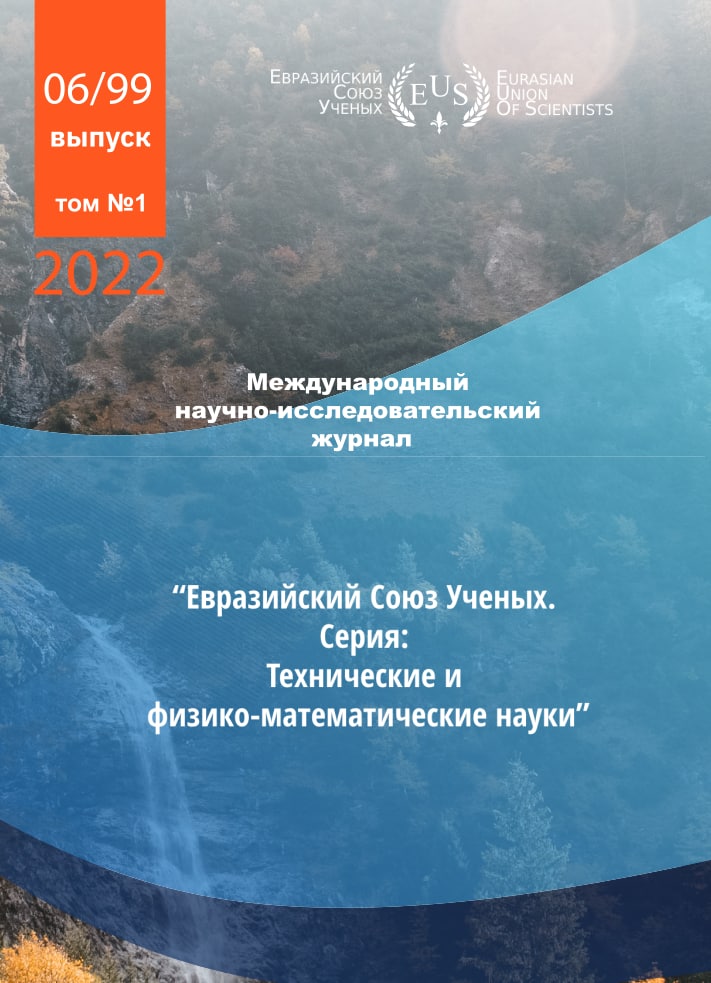VARIABLES OF GEOMORPHOMETRY, THEIR MEANING AND APPLICATIONS
Abstract
Methods of quantitative land surface analysis are considered. Formulae of morphometric variables (MVs) are
deduced that depend on first and second derivatives of a smooth surface S. These MVs can describe properties of
flows in gravitational field (the system “surface + vector field”) or of S itself. The meaning of each MV is
established. Widely known approaches are shortly described of how to use MVs and other environmental factors
for studying other landscape features (of soil, vegetation), specifics of MVs for evaluating thermal and light
regimes of slopes, the role of a scale.
References
2. Gauss K.F. (1828) Obshhie issledovanija o krivyh poverhnostjah // Ob osnovanijah geometrii. M.: Gos. izd-vo tehniko-teoreticheskoj literatury, 1956. S. 123-161.
3. Matveev L.T. Kurs obshhej meteorologii. Fizika atmosfery. Izd.2-e. L.: Gidrometeoizdat, 1984. 752 s.
4. Nikol'skij S.M. Kurs matematicheskogo analiza. V 2-h tomah. M.: Nauka, 1975. 840 s.
5. Pogorelov A.V. Differencial'naja geometrija. M.: Nauka, 1974. 176 s.
6. Finn R. Ravnovesnye kapilljarnye poverhnosti. Matematicheskaja teorija. M.: Mir, 1989. 321 s.
7. Sharyj P.A. Topograficheskij metod vtoryh proizvodnyh // Geometrija struktur zemnoj poverhnosti. Pushhino: PNC AN SSSR, 1991. S. 28-58.
8. Sharyj P.A., Ruhovich O.V., Sharaja L.S. Metodologija analiza prostranstvennoj izmenchivosti harakteristik urozhajnosti pshenicy v zavisimosti ot uslovij agrolandshafta // Agrohimija. 2011. № 2. S. 57-81.
9. Sharyj P.A., Ruhovich O.V., Sharaja L.S. Predskazatel'noe modelirovanie harakteristik urozhaja ozimoj pshenicy // Cifrovaja pochvennaja kartografija: teoreticheskie i jeksperimental'nye issledovanija. M.: Pochvennyj institut im. V.V. Dokuchaeva, 2012. S. 310-326.
10. Sharyj P.A., Pinskij D.L. Statisticheskaja ocenka svjazi prostranstvennoj izmenchivosti soderzhanija organicheskogo ugleroda v seroj lesnoj pochve s plotnost'ju, koncentraciej metallov i rel'efom // Pochvovedenie. 2013. № 11. S. 1344-1356.
11. Sharyj P.A., Smirnov N.S. Mehanizmy vlijanija solnechnoj radiacii i anizotropii mestnosti na rastitel'nost' temnohvojnyh lesov Pechoro-Ilychskogo zapovednika // Jekologija. 2013. № 1. S. 11-19.
12. Sharyj P.A., Sharaja L.S., Ivanova A.V., Kostina N.V., Rozenberg G.S. Sravnitel'nyj analiz vidovogo bogatstva zhiznennyh form sosudistyh rastenij v Srednem Povolzh'e // Sibirskij jekologicheskij zhurnal. 2019. № 4. S. 383-396.
13. Beers T.W., Dress P.E., Wensel L.C. Aspect transformation in site productivity research // Journal of Forestry. 1966. V. 64. P. 691-692.
14. Bishop M.P., James L.A., Shroder Jr. J.F., Walsh S.J. Geospatial technologies and digital geomorphological mapping: Concepts, issues and research // Geomorphology. 2012. V. 137. P. 5-26.
15. Cayley A. On contour and slope lines // Philosophical Magazine. 1859. Series 4. V. 18. N. 120. P. 264-268.
16. Evans I.S. General geomorphometry, derivatives of altitude, and descriptive statistics // Chorley R.J. (Ed.) Spatial Analysis in Geomorphology. London: Methuen & Co., Ltd., 1972. Ch. 2. P. 17-90.
17. Evans I.S. The effect of resolution on gradients calculated from an altitude matrix / Report 3 on Grant DA-ERO-591-73-G0040, ‘Statistical characterization of altitude matrices by computer’ (Appendix: Stationarity). Durham, England: Department of Geography, University of Durham, 1975. 24 p.
18. Guisan A., Zimmermann N.E. Predictive habitat distribution models in ecology // Ecological Modelling. 2000. V. 135. N. 2-3. P. 147-186.
19. Hwang T., Song C., Vose J.M., Band L.E. Topography-mediated controls on local vegetation phenology estimated from MODIS vegetation index // Landscape Ecology. 2011. V. 26. P. 541-556.
20. Jenčo M., Pacina J., Shary P.A. Terrain skeleton and local morphometric vvariables: geosciences and computer vision technique // Horák J., Halounová L., Kusendová D., Rapant P., Voženílek V. (Eds.) Advances in Geoinformation Technologies. Ostrava: VŠB - Technical University of Ostrava, 2009. Chapter 5. P. 57-76.
21. Koenderink J.J., van Doorn A.J. Two-plusone-dimensional differential geometry // Pattern Recognition Letters. 1994. V. 15. N. 5. P. 439-443.
22. Krcho J. Morphometric analysis of relief on the basis of geometric aspect of field theory // Acta Geographica Univ. Comenianae, GeographicoPhysica. 1973. N. 1. P. 7-233.
23. Krcho J. Teoretická concepcia a interdisciplinarne aplikacie komplexného digitalneho modelu reliéfu pri modelovanï dvojdimenzionalnych poli // Geografický časopis. 1983. V. 35. N. 3. P. 265- 291.
24. MacMillan R.A., Shary P.A. Landforms and landform elements in geomorphometry // Hengl T., Reuter H.I. (Eds.) Geomorphometry: Concepts, Software, Applications. Developments in Soil Science, Volume 33. Amsterdam, etc.: Elsevier, 2009. Chapter 9. P. 227-254.
25. Minár J., Jenčo M., Evans I.S., Minár Jr. J., Kadlec M., Krcho J., Benová A., Pacina J. Third-order geomorphometric variables (derivatives): definition, computation and utilization of changes of curvatures // International Journal of Geographical Information Science. 2013. V. 27. N. 7. P. 1381-1402.
26. Mitašová H., Hofierka J. Interpolation by regularized spline with tension. II. Application to terrain modeling and surface geometry analysis // Mathematical Geology. 1993. V. 25. N. 6. P. 657-669.
27. Mitašová H., Hofierka J., Zlocha M., Iverson R.L. Modeling topographic potential for erosion and deposition using GIS // International Journal of Geographical Information Science. 1996. V. 10. N. 5. P. 629-641.
28. Pierce Jr. K.B., Lookingbill T., Urban D. A simple method for estimating potential relative radiation (PRR) for landscape-scale vegetation analysis // Landscape Ecology. 2005. V. 20. N. 2. P. 137-147.
29. Pike R.J., Evans I.S., Hengl T. Geomorphometry: a brief guide // Hengl T., Reuter H.I. (Eds.) Geomorphometry: Concepts, Software,
CC BY-ND
A work licensed in this way allows the following:
1. The freedom to use and perform the work: The licensee must be allowed to make any use, private or public, of the work.
2. The freedom to study the work and apply the information: The licensee must be allowed to examine the work and to use the knowledge gained from the work in any way. The license may not, for example, restrict "reverse engineering."
2. The freedom to redistribute copies: Copies may be sold, swapped or given away for free, in the same form as the original.





